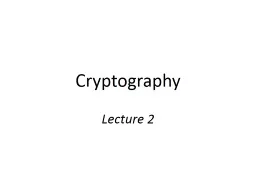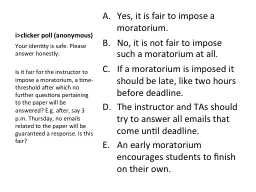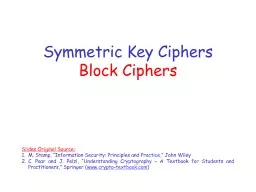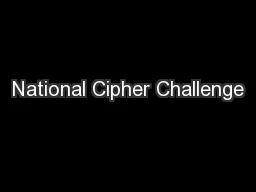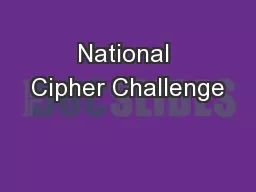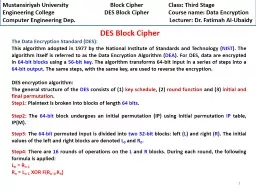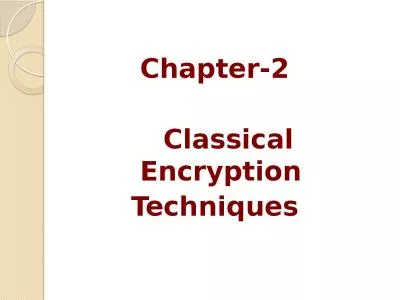PPT-Cryptography Lecture 2 Clicker quiz Using the English-language shift cipher (as described
Author : ellena-manuel | Published Date : 2019-11-01
Cryptography Lecture 2 Clicker quiz Using the Englishlanguage shift cipher as described in the book what is the encryption of good using the key b XYYD HPPE QRST
Presentation Embed Code
Download Presentation
Download Presentation The PPT/PDF document "Cryptography Lecture 2 Clicker quiz Usin..." is the property of its rightful owner. Permission is granted to download and print the materials on this website for personal, non-commercial use only, and to display it on your personal computer provided you do not modify the materials and that you retain all copyright notices contained in the materials. By downloading content from our website, you accept the terms of this agreement.
Cryptography Lecture 2 Clicker quiz Using the English-language shift cipher (as described: Transcript
Download Rules Of Document
"Cryptography Lecture 2 Clicker quiz Using the English-language shift cipher (as described"The content belongs to its owner. You may download and print it for personal use, without modification, and keep all copyright notices. By downloading, you agree to these terms.
Related Documents

